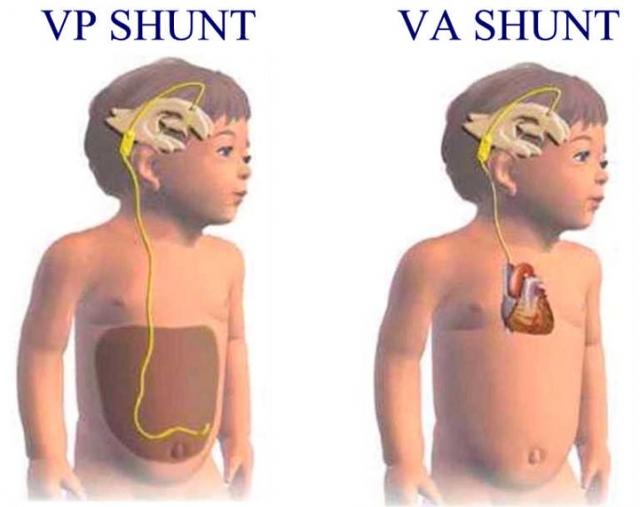| |||||||||||||||||||||||||||||||||||||||||||||||||||||||||||||||||||||||||||||||||||||||||||||
|
login
|
|
||||
|
Hydrocephalus is most often treated by surgically inserting a shunt system. The shunt re-directs the CSF out of the head through the tubing to a location elsewhere in the body where it can be absorbed. The shunt is usually placed behind the ear and the tubing is threaded from behind the ear, under the skin, to the area of the abdomen, heart, or lung. Your physician will determine the drainage location based on your condition, age and other factors. ______________________________________________TYPES OF SHUNTSMany types of shunts are available. Your child’s neurosurgeon will decide which shunt is best for your child. Each varies slightly but generally has four parts:
COMPLICATIONS WITH HAVING A SHUNTFor the most part, shunts function well. However, there are complications that can occur. A blockage or obstruction of the shunt is the most common complication of the system. Obstruction may occur at any point along the path of the shunt. The opening at the ventricular end may become plugged with brain, choroid plexus tissue, or blood. The peritoneal end may also become blocked by scar tissue. An obstructed shunt causes an increased volume of CSF in the ventricular system of the brain. This can lead to the same symptoms as those listed below for hydrocephalus. The shunt can be repaired (shunt revision) in surgery lasting about 1 – 2 hours. SYMPTOMS OF SHUNT MALFUNCTION
A shunt infection can also cause the shunt not to work properly and cause CSF to backup, leading to enlarged ventricles. Signs and symptoms of shunt infection also relate to signs of shunt malfunction. In addition, other signs and symptoms related to shunt infection include:
A malfunction and/or infected shunt can be a serious problem and sometimes is life threatening. In these cases, the child is very ill and surgery is done rapidly. In most cases the symptoms appear gradually. They may not become serious until the ventricles are under pressure. In some cases, the shunt can be “fixed” several days after finding the problem. ________________________________________________________________________________________________________ NEVER PUMP THE CHAMBER YOURSELF. Because serious problems may result from too frequent or improper flushing of the chamber, parents and children should NEVER try to manipulate the shunt system on their own UNLESS THEY ARE EXPLICITLY INSTRUCTED TO DO SO BY THE DOCTOR. _______________________________________________________
|
||||||||||||||||||||||||||||||||||||||||||||||


